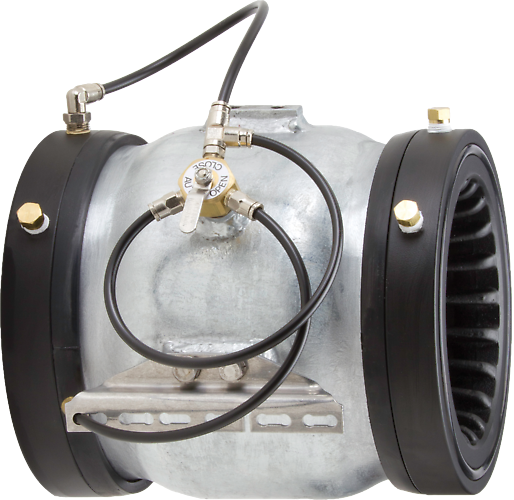Achieve Seamless Integration and Control With High Quality Building Automation Controls
In the realm of modern structure administration, the value of quality building automation controls can not be overemphasized. As innovation remains to advance, the assimilation and control of different systems within a structure have advanced to be a lot more advanced and effective. The smooth procedure and monitoring of lighting, COOLING AND HEATING, security, and various other building functions have become extremely important for improving resident comfort, energy effectiveness, and total operational performance. The journey towards attaining true combination and control is a complex one, with considerations ranging from system compatibility to cybersecurity. Welcoming high quality structure automation controls is not merely an issue of convenience yet a critical vital for organizations intending to maximize their centers' performance and sustainability.

Development of Structure Automation Controls
Throughout the past couple of decades, the evolution of building automation controls has actually substantially transformed the method buildings are managed and run. At first, building automation systems largely concentrated on standard functions such as regulating air, heating, and air flow conditioning (COOLING AND HEATING) systems. As technology advanced, these controls have come to be extra sophisticated, permitting for a wider range of building systems to be incorporated and handled centrally.
The advancement of building automation controls has seen a change towards more intelligent systems that can adapt to altering problems in real-time. This versatility is crucial for optimizing power effectiveness and guaranteeing resident comfort. Additionally, contemporary building automation controls now provide functions such as predictive upkeep, remote surveillance, and data analytics, making it possible for facility managers to make data-driven choices to improve building performance.

Advantages of High Quality Combination
The development in building automation manages towards more intelligent systems has highlighted the substantial advantages of high quality integration in optimizing structure procedures and improving total efficiency. This centralized control additionally offers far better visibility and understandings right into building performance, enabling positive maintenance and optimization methods. Generally, the advantages of top quality assimilation in structure automation controls are undeniable, offering enhanced effectiveness, convenience, and functional performance.
Enhanced User Experience and Access
Enhancing customer interaction with building automation controls through intuitive design and enhanced ease of access elevates the overall experience for occupants and facility supervisors alike. By concentrating on user experience, developing automation systems can end up being much more easy to use and effective. User-friendly interfaces, clear navigation, and customizable settings encourage customers to engage with the controls quickly and successfully.
Availability features play an important function in guaranteeing that all individuals, including those with disabilities, can make use of the building automation manages easily. Integrating features such as voice commands, responsive buttons, and color-contrasted screens can improve accessibility and make the controls extra inclusive.
In addition, boosted customer experience results in greater customer contentment, boosted productivity, and far better decision-making. Residents can readjust environmental setups according to their preferences, while center managers can effectively keep track of and take care of building systems - control valves. Overall, focusing on individual experience and availability in structure automation manages adds to a more productive and smooth structure atmosphere for all stakeholders entailed
Lasting Practices Through Automation

Furthermore, automation can assist in the integration of sustainable energy sources such as solar panels or wind generators into structure procedures. Through automation, buildings can line up with modern-day sustainability goals and contribute to a greener future.
Future Trends in Building Control Solution
In anticipation of advancing innovations and advancing sustainability practices, the trajectory of building control systems is poised to welcome cutting-edge options and transformative strategies. One famous fad forming the future of structure control systems is the raised combination of Expert system (AI) and artificial intelligence. These innovations allow buildings to adapt in real-time to transforming conditions, enhancing power consumption and improving convenience for residents. In addition, the Internet of Points (IoT) is revolutionizing structure control systems by connecting devices and sensors to boost and streamline operations performance.
An additional essential fad is the focus on cybersecurity steps to safeguard versus possible hazards to building automation systems. As buildings become more interconnected, ensuring robust cybersecurity protocols will be necessary to protect sensitive data learn the facts here now and avoid unapproved gain access to.
In addition, the change towards cloud-based systems is getting energy, enabling for centralized control and remote access to building systems. This helps with simpler surveillance, maintenance, and updates, enhancing the overall efficiency and flexibility of structure control systems. As modern technology remains to development, these trends are anticipated to shape the future landscape of building automation controls, driving advancement and sustainability in the constructed setting.
Verdict
In conclusion, developing automation controls have progressed Related Site substantially, offering numerous benefits such as boosted individual experience, availability, and sustainable techniques. Quality combination plays a vital function in attaining smooth control and efficient procedure of structure systems. Future trends in building control systems are most likely to concentrate on further boosting automation capabilities for boosted power performance and total performance. It is important for building owners and operators to prioritize the fostering of quality building automation regulates to optimize building operations and accomplish long-lasting sustainability goals.
In the world of modern building management, the importance of top quality building automation controls can not be overemphasized. Overall, the development of building automation regulates proceeds to drive innovation in the structure monitoring market, providing new possibilities for producing smarter and extra sustainable structures.
The innovation in see it here building automation regulates towards more intelligent systems has highlighted the significant benefits of high quality assimilation in optimizing building procedures and boosting overall performance. Overall, prioritizing individual experience and availability in structure automation manages adds to an extra efficient and seamless structure atmosphere for all stakeholders entailed.
It is vital for structure proprietors and drivers to focus on the adoption of top quality structure automation controls to enhance structure procedures and attain lasting sustainability goals. - control valves